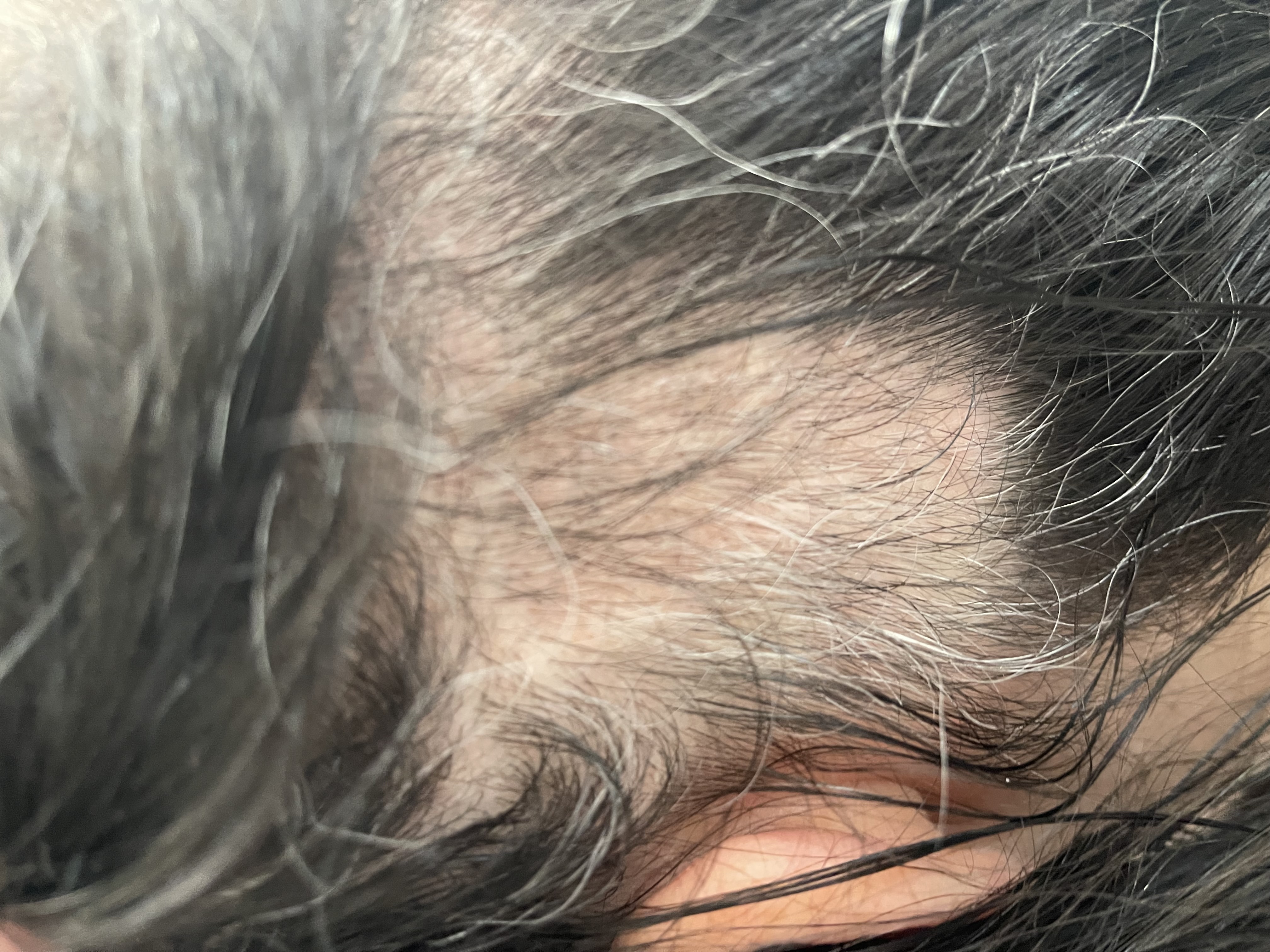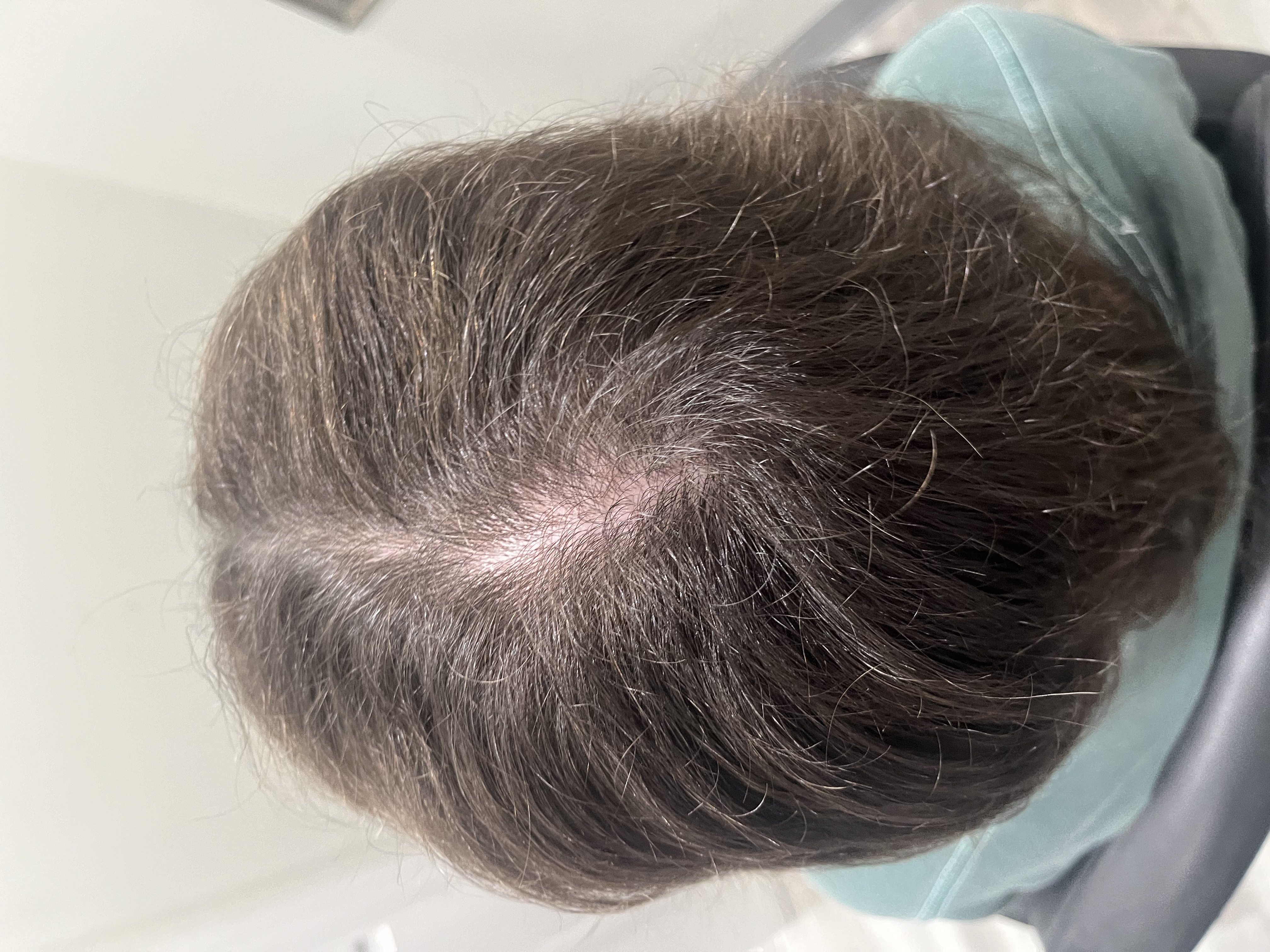Decoding Pili Torti: Understanding Twisted Hair Syndrome
The condition of the Twisted Hair System known as "Pili Torti" is often confused with Trichotillomania. Pili Torti is a condition where hair grows in a twisted fashion which causes irregularities at irregular intervals in the hair growing out of the hair follicle.
it is presumed that perifollicular fibrosis that causes rotational forces that distort the hair follicle. The condition is associated with underlying conditions such as malnutrition, anorexia, lupus, inflamed scalp conditions, and hearing problems.
Pili Torti is a rare condition and is called inherited pili torti, rolled hair or circle hair. Symptoms can include brittle hair, which is a significant factor in identifying the diagnosis of inherited pili torti. The first line of defense to determine if you have "Twisted Hair Syndrome" is a visit to a dermatologist, an exam of the hair under a microscope, and a scalp biopsy, especially since this case report indicates that this condition can begin in the early childhood onset type and may occur in the second or third year of life, including both the early onset type and the late onset type, and can be associated with cicatricial alopecia and epidermal growth factor receptor inhibitors as well as carbamide perhydrate.

Random Kinky, Thick Hair Strands?? : r/HaircareScience
Pili torti, also known as "twisted hair syndrome," is a rare condition where the hair shafts are twisted along their axis, resulting in fragile, brittle hair. It can be caused by genetic factors, certain medical conditions, or external factors like excessive heat or chemical treatments.
What is Twisted Hair Syndrome
Noelle Salon has a Facebook group and below is a description of a person who believes they have "Twisted Hair Syndrome."
"Question— does anyone have experience with twisted hair? As in all your hair is twisted together in random different directions, meaning underneath it all are layers of matting due to the tight twists? Sometimes it feels like wearing way too tight of a hat because of it.
I'm still waiting to get to the doctor for a diagnosis. It's been plaguing me for so long but I was afraid to ask for help because, well, it's Trich and I've had so many healthcare providers think I'm “crazy” for my dermatillomania (which turned out to really be trich anyway)
The problem is that no matter how much progress I make untwisting, it all twists right back up and sticks to my scalp.
It's twisted so tight that it cut into and under my skin, so that makes it even harder not to pick.
Structure of a normal hair follicle
The hair follicle is a complex structure that plays a crucial role in hair growth and health. It comprises several layers, including the inner and outer root sheaths, which are essential for the integrity of the hair strand. The inner root sheath, located closest to the hair shaft, supports the keratinization process and helps to shape the emerging scalp hair. In contrast, the outer root sheath serves as a protective barrier and is involved in the hair's overall anchorage within the scalp. Understanding the structure and function of these components is vital for diagnosing and treating hair disorders like pili torti.
Additionally, the hair follicle is embedded within the dermal layer of the skin, surrounded by connective tissue that supplies necessary nutrients and oxygen. This vascular supply, along with the follicle's intricate architecture, ensures that hair remains healthy and resilient. Any disruption in this delicate balance, whether due to genetic factors, inflammation, or external stressors, can lead to hair abnormalities such as twisted or brittle hair shafts commonly seen in conditions like pili torti.
How do you treat pili torti? : r/scarringalopecia
Treatment for congenital pili torti involves addressing any underlying causes, like nutrient deficiencies or genetic conditions. Although there is no specific treatment, topical treatments and heat treatments may help improve hair health and potentially increase hair density. Behavioral therapies may also be necessary to address any compulsive hair-pulling behavior associated with trichotillomania.
Trichonodosis is Knotted Hair
I've done so much research over the years but the closest I've come is pili torti “twisted hair syndrome” which is super rare, perhaps related to congenital deafness, or perhaps trichonodosis “knotted hair” or even congenital hereditary hypotrychosis. There are definitely knots under the skin too, and it affects my whole body. I think. Definitely tunneling hairs under the surface and they follow a trail of cysts.
My body could also be Hidradenitis suppurativa. I'm obsessed of course because just knowing what it is would give me some peace of mind. Possible frontal fibrosing alopecia."
I am sure you can feel her frustration, but is she suffering from pili torti, Trichonodosis, or knotted hair? It is impossible to know without a doctor's diagnosis, but perhaps what she is feeling is the bizarre hair that grows back after pulling. When the hair follicle is traumatized from pulling or even chemotherapy, new growth will be of a different texture. It is often coarse, curly, and even white.

Signs and symptoms of hair syndromes
Hair syndromes, including conditions like alopecia areata, discoid lupus erythematosus, Bjornstad syndrome, chronic cutaneous lupus erythematosus, graft-versus-host disease, systemic sclerosis related loose anagen hair syndrome, and focal dermal hypoplasia, often present distinct clinical features, signs and symptoms. The American Academy of Dermatology highlights that alopecia areata is characterized by sudden hair loss in circular patches, which can lead to complete baldness across the entire scalp in severe cases, known as alopecia totalis or universalis. Individuals with ectodermal dysplasia may also experience associated symptoms such as itching or burning sensations in the affected areas. Genetic hair shaft abnormalities, including issues related to pubic hair, can manifest as changes in hair texture, brittleness, or unusual growth patterns, making it essential to recognize these clinical features early for proper diagnosis and intervention.
Furthermore, the psychological impact of these conditions cannot be understated. Many individuals with hair syndromes may experience anxiety, depression, or low self-esteem due to their appearance. Thus, a comprehensive approach that addresses both the physical and emotional aspects of hair disorders is crucial for effective management and support.
Causes of hair texture abnormalities
Hair texture abnormalities can arise from various factors, including genetic hair shaft abnormalities, genetic predispositions, and environmental influences. One common cause is brittle hair, which results from damage to the hair shaft due to excessive heat styling, chemical treatments, or harsh hair care products. This damage often leads to breakage, split ends, and an overall lack of luster. Additionally, people with dark hair may experience conditions like "kinky hair disease" and argininosuccinic aciduria, which is an autosomal dominant condition that can cause hair to grow in unpredictable patterns, leading to tangling and difficulty in styling. This is particularly relevant when considering the role of the hair cortex in maintaining overall hair health.
Understanding the underlying mechanisms of hair texture abnormalities is essential for effective treatment. For instance, individuals with kinky hair disease may benefit from specialized hair care routines that focus on moisture retention and gentle handling. By addressing these factors, one can improve hair health and appearance, ultimately restoring confidence in those affected by such conditions.

Trichotillomania Cowlicks
Also, Trichotillomania sufferers tend to pull hair in areas where cowlicks exist, and near hair growth patterns. The hair feels different, there is often an obsession to pull it out and then the cycle continues.
Trichotillomania is a "BFRB" Body-Focused Repetitive Behavior" it appears in pulling hair, eyebrows, skin picking, and nail-biting. The behavior can be life-altering, and impossible to live with.
Many of our clients with Trichotillomania have prevented the pulling behavior with a combination of therapy, SSRIs, and a barrier such as a hair topper. It takes more than just one approach to stop pulling, as with any type of "addiction," a day-by-day mindset is the most successful.
Hair Loss background
With Alopecia Areata, fungal infections, other autoimmune diseases, thinning hair by Trichotillomania which removes hair follicles by physical means. At Noelle Salon, we cover the various approaches to hair solutions to treat hair loss, female pattern baldness, balding spots, and other conditions to which you lose hair. At Noelle Salon, we focus on hair growth techniques. Hair systems and hair extension maintenance is part of the journey while wearing them. For Trichotillomania, as our hair grows they both will loosen, and service is required. The difference between a hair system and hair extensions for Trichotillomania clients varies based on the location of hair loss.
Diagnosing hair shaft defects
The diagnosis of hair shaft defects, such as the diagnosis of woolly hair, pili torti, pili annulati, and trichorrhexis invaginata, relies heavily on thorough light microscopy and microscopic examination of hair keratin. This process typically involves analyzing hair samples under high magnification to identify any irregularities in the hair structure, such as twisting or flattening. A trichoscopic examination can also be beneficial, providing a non-invasive method to visualize hair and scalp conditions.
Diagnostic Method
Description
Microscopic Examination
Analyzes hair samples for structural abnormalities.
Trichoscopy
A non-invasive technique to visualize scalp conditions.
Early Onset Evaluation
Focuses on identifying signs in younger patients.
In cases of early onset pili torti, it is crucial to document any associated symptoms and family history, including a case of pili torti, as many hair shaft defects can be hereditary. By adopting a comprehensive diagnostic approach, healthcare providers can develop effective treatment strategies tailored to the individual needs of each patient.
Effective treatments for hair syndromes
When it comes to treating hair syndromes, a multifaceted approach is often essential. Topical minoxidil is a commonly recommended treatment that stimulates hair growth by enhancing blood flow to the hair follicles. For some patients, oral retinoids may also be prescribed to help manage hair texture abnormalities and promote healthier hair growth.
Additionally, the incorporation of epidermal growth factor receptor (EGFR) and epidermal growth factor (EGF) in treatment regimens has shown promise in promoting hair follicle regeneration. EGF can stimulate cell proliferation and migration, thereby supporting the hair growth cycle. Combining these treatments with behavioral therapies is crucial, especially for individuals dealing with trichotillomania, as it addresses both the physiological and psychological aspects of hair syndromes, ultimately leading to more successful outcomes.






2 comments